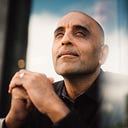Your Sleep Troubles May Run Beneath Very Active Waters
Once upon a time, it seemed like everyone and their little brother was getting diagnosed with ADD or ADHD.
Maybe it was you! Maybe you remember terminally trying to be quiet in class and getting thrown onto a stabilizing regiment of pharmaceutical meth.
Over the years, public sentiment has wavered on attention deficit disorder (now called attention deficit hyperactivity disorder.) Many declared it fake, while others lament how easy the symptoms are to ignore. Worse, how hard it is to live with them untreated.
ADHD symptoms went the way of lots of other culturally prevalent oversimplification…
Depression isn’t just forgetting to shower. Bipolar isn’t flashing back and forth between rageful and docile. Anxiety isn’t chewing your nails because you’re nervous.
Those can be symptoms, indicators, or results of various disorders. But the disorders themselves are much more complicated.
For example, research is piling about how the adverse effects that ADHD has on sleep. Sleep is already an underrepresented cognitive arena worthy of serious investigation.
DSPS and ADHD — A Perfect Marriage?
Sleep is doubly important for those who fall outside of the range of neurotypical and low-maintenance health. (It regenerates and repairs cells while preparing the body’s energy for the next day.)
Life without quality sleep is difficult for everyone, but for a person whose pathology already flows outside the norm, it’s nearly impossible.
Just like in the case of delayed sleep phase syndrome.
First, let’s define our terms.
DSPS is a sleep disorder where your circadian rhythm is thrown out of balance and your melatonin production and internal sleep signals are delayed two or more hours. That means you go to sleep later and wake up later, and it’s all biological.
ADHD is a developmental impairment of the brain’s executive function, affecting focus, short-term memory, attention span, commitment, planning, and energy. It is more prevalent in children. Often, it’s harder to diagnose in women since its symptoms were originally observed in boys and present differently by gender.
Treatment for DSPS is usually one of these three options:
- Melatonin therapy (taking melatonin a few hours before bedtime)
- Light therapy (advancing sleep/wake phases through early morning use)
- Chronotherapy (further delaying sleep until it arrives naturally at a more socially appropriate time.)
Treatment for ADHD is usually by stimulants. It’s thought to help ADHD symptoms by triggering the release of dopamine to aid in focusing the brain’s direction.
Now, one could speculate that the use of stimulants to treat ADHD can be linked to the delayed sleep that an estimated 73% of people with ADHD experience.
But it’s more likely that the pathology of their connection has more to do with the brain areas both affect.
DSPS and ADHD share similar routes in the brain!
Where Do They Both Go?
ADHD can be diagnosed by mapping the brain and determining which areas are functioning differently from a neurotypical brain.
The areas struggling with “abnormal” activity and connectivity are the orbito-medial prefrontal cortex, right anterior cingulate, right anterior corona radiata, the basal ganglia, and the superior and inferior longitudinal fasciculus.
It also affects cerebral blood flow.
One study in particular found reduced blood flow to the limbic and subcortical region in ADHD sufferers. This part of the brain is involved in sleep/wake cycles, learning functions, and more. People with ADHD have lowered functionality of typical circadian rhythms…
And this could be directly linked to the delayed sleep response present in DSPS.
Still, other studies have other ideas.
One study suggests that the locus coeruleus can explain the delayed sleep response. This area, near the cerebellum on the back of the brain stem, is involved in the REM process. It also regulates the body’s interpretation of circadian rhythm.
Since its function is altered in those with ADHD, it may be responsible for the common concurrency of DSPS.
Then there’s the pineal gland, which is smaller in people with ADHD, which could be at fault in regulating the circadian preferences of the body.
Why is the World One-Size-Fits-All?
Research has yet to solidify this connection, but even in the investigative stage, there seems to be fertile ground for connecting these dots.
There have even been suggestions that DSPS treatments (like light therapy) may reduce symptoms of ADHD.
Studies like these further our understanding of what blocks us from living socially “normal” lives.
After the last year, we know that accommodations for those with disabilities, nuanced preferences, and other restrictions can allow for a much higher standard of living.
Should we treat DSPS? Should people with ADHD and DSPS be allowed to function per their neurology in a world that runs from 9–5?
How can we help each other to live happier, easier lives?
If you enjoyed these thoughts and think we’ve got something in common, I have a feeling you’re going to love the streaming service I launched last year — whole.tv. It’s my answer to the dilemma of conscious consumption, where you’ll find ALL of my documentaries and series, as well as more from renowned thought leaders like Nick Polizzi, Dr. David Perlmutter, Dr. Tom O’Bryan, and more. Try it for two weeks — on me.
